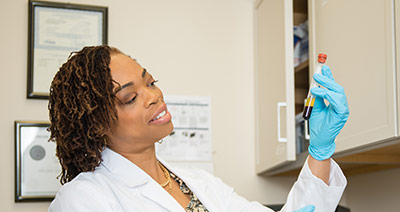Monthly Archives: January 2024
P-Shots – What Are They, and Do They Work?
P-shots or Priapus shots, aptly named after the Greek god of fertility, have become popular in recent years as some in the medical community turn their minds toward biohacking or improving the function of the body. From online resources to doctors and men’s health clinics, P-shots are being advertised as a way to get many benefits from platelet-rich plasma, or PRP, specifically as it relates to the penis. Let’s see what the most common claims are. P-shots can improve erectile function. P-shots can increase the girth and or length of the penis. P-shots can improve the health of the penis.
Penile Implant – A Fix for Peyronie’s and Erectile Dysfunction?
Of the most common and debilitating male sexual function concerns that Dr. Engel treats, erectile dysfunction, and Peyronie’s disease are at the top of the list, both in incidence and in the desire for the patient to have them treated. When discussing these two conditions with patients, they are often seen as having separate and distinct treatment protocols. To some degree, this is true if they occur individually. However, Peyronie’s disease and ED often co-occur. One may cause the other, or they may both be present independently. In this article, we will discuss when a penile implant may be appropriate to treat both conditions, giving patients a one-stop option for handling two significant concerns.
Should I Worry About Priapism With My ED Treatment?
Priapism is a greatly misunderstood concern. Many people call priapism the four-hour erection and think that it is alternately a good thing – a sign of masculinity or amusing; however, the exact opposite is true. Yes, we all want strong, prolonged, lasting erections, but when they begin to damage penile tissue, often permanently, we need to stop them in their tracks. In this article, we discuss the primary non-surgical ED treatments, whether they could cause priapism, and what to do about it. Before we continue, however, it must be said that priapism is very rare, and while you should know about it, you don’t necessarily need to actively worry about it. Remember, a satisfying sex life is also psychological, and you do not need any impediments to that. You should also know that several medications can cause priapism, and as such, you should speak to your urologist to understand more about possible causes.
Are Injections for ED Extreme?
Erectile dysfunction, or ED, is a problem as old as humanity and remains virtually inevitable as we age. No matter how healthy we are, the heart and blood vessels, especially those arteries feeding oxygen to the penis, eventually lose their ability to transmit blood to the body as effectively as before. The best analogy involves our capacity to exercise as we age. No matter how in shape we are for our age, our bodies lose some ability with time. As it relates to erectile function, this aging process leads to weaker erections over time and, eventually, the inability to enjoy one’s sex life.
Supplementing Nitric Oxide – A Natural Therapy for Erectile Dysfunction?
As we age, there is an inevitable decline in the ability to achieve an erection. This is simply because erectile function depends on blood flow to the penis, and as a man ages, the circulatory system becomes less efficient. This is also why we can’t perform in sports or endurance in our later years the same way we did in our teens, 20s, or 30s. With that said, some men begin to lose their erectile function earlier, and we see patients as young as 30 or 40 who have concerns about their ability to achieve and maintain an erection during sex. At this point, there is a continuum of care that almost every ED patient will follow. This begins with an evaluation of the root cause of the problem, and the answer may include any combination of psychological therapy (for a small number of patients), lifestyle change, and ED medications like Sildenafil and Tadalafil. If these options fail, we move on to injection therapy or a penile implant for severe cases of ED.
Rezum: What to Expect
REZUM therapy is a minimally invasive, in-office, and non-surgical procedure to shrink an enlarged prostate due to benign prostatic hyperplasia or BPH. Heat generated by radiofrequency waves is delivered to the prostate through a needle that emits water droplets that generate steam. This allows for a rapid treatment that has the ability to expand but will not go beyond the anatomical boundary of the prostate itself. The REZUM starts with a transrectal ultrasound which will be used to take a picture of the prostate, determine its dimensions, and inject lidocaine as local anesthesia. This is a very well-tolerated step akin to numbing before a dental procedure and is very quick. The patient will then be repositioned with legs in stirrups and the REZUM can commence.
Can I Take ED Meds Forever?
Erectile dysfunction most often has a slow progression, where patients initially have occasional trouble achieving or maintaining an erection, followed by subsequent difficulty finishing. Eventually, the condition becomes troublesome enough that without intervention, a satisfying, sex life is not possible. Of course, once the patient first realizes they have a problem, the psychological effects are often as problematic as the physical ones. While the prospect of taking medication to achieve an erection can be dispiriting, patients need to know that they are not alone. Around 50% of all men over 60 have trouble attaining or maintaining their erection, and those that opt for medical therapy as a front-line attack on the condition can often regain a satisfying sex life immediately. Further, with generics like sildenafil and tadalafil on the market, the cost of this improvement in sexual function is minimal when compared to when these drugs were on-patent (Viagra and Cialis).
Comparing Tadalafil (Generic Cialis) and Sildenafil (Generic Viagra)
When patients come to us looking for relief from their erectile dysfunction, they are faced with a preliminary decision of which medication, tadalafil or sildenafil, is better. Back in the day, when these medications were still on patent AND named Cialis and Viagra, respectively, they were very costly. These were the days of fighting with and often losing to insurance companies. Now that generics are available, so many more people can take advantage of these great, highly effective drugs. We often suggest that patients taking ED medications for the first time try both separately to see which works best for them with the fewest side effects. Ultimately, with prices as low as they are, there’s little financial risk in seeing which is best for our patient’s unique circumstances.
Treating Large Prostates (>80g) for BPH
Benign Prostatic Hyperplasia (BPH) or enlarged prostate is a concern that most men will experience as they age. On average, about 50% of men over 50 and 80% of men over 80 will experience the lower urinary tract symptoms associated with prostatic enlargement. Because of the nature of this condition, many novel procedures have tried to address the limitations of their predecessors. Some have succeeded, while others have fallen out of favor. In the absence of more serious medical complications, Dr. Engel always focuses on medical therapy as a first line of treatment for most cases of an enlarged prostate. However, if initial medical therapy does not offer the relief the patient expects, if there are side effects, or if the patient simply does not want to be on chronic medication, we often move on to offering minimally invasive BPH therapies that can be quick, effective, and have minimal side effects. However, some patients will need surgical intervention such as robotic simple prostatectomy or HoLEP (Holmium laser enucleation of the prostate) as the procedure of choice when the prostatic enlargement is extreme. The prostate is measured in grams; we consider a large prostate to be anything over 80g, and Dr. Engel has treated prostates of up to 400g.
Why Hydration Is So Important in Urology
As you probably know, the body is composed of 70% water. It’s one of the reasons why we can’t last more than a few days without water, but we can last for weeks without food. You can imagine. Therefore, hydration is key to a healthy body, including a healthy urinary system. But, what exactly does water do for our urinary system, and how do we know we’re getting enough of it? First, water is critically important for every cell and structure in the body. Water makes everything work better, from bones and cartilage to tendons and muscles. Dehydration affects the brain and body at almost every level.





